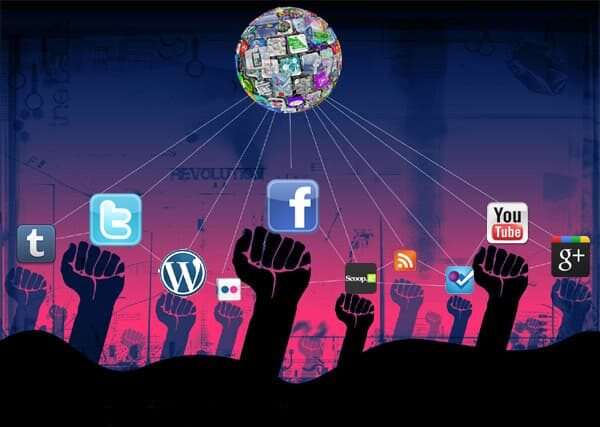In the spring of 2023, a small environmental group in Southeast Asia transformed into a global movement overnight. Their documentation of illegal logging activities shared through a sophisticated network of digital tools sparked international outrage and prompted immediate governmental action. This remarkable achievement wasn’t just about the cause – it demonstrated the extraordinary power of digital tools in modern activism, where technology serves as both a megaphone and an organizing force for social change.
The Digital Transformation of Grassroots Movements
The landscape of activism has undergone a profound transformation in the digital age. What once required physical presence, printed materials, and traditional media channels now thrive in the digital realm, where messages can circumnavigate the globe in seconds, and movements can mobilize thousands with the tap of a screen. This shift hasn’t just changed the tools of activism – it has fundamentally altered how movements organize, grow, and achieve their objectives.
The Evolution of Modern Activism
Digital activism has matured far beyond simple online petitions and social media campaigns. Today’s digital activists employ sophisticated technology stacks integrating communication, organization, security, and impact measurement tools. These digital ecosystems enable movements to operate with unprecedented efficiency and reach while maintaining the security and accountability necessary for successful advocacy.
The power of digital tools in modern activism lies not just in their reach but in their ability to democratize participation. Geographic boundaries have dissolved, allowing causes to gather support from across the globe. Financial barriers have lowered, with digital tools providing cost-effective alternatives to traditional campaign methods. Perhaps most importantly, these tools have enabled anyone with internet access to participate actively in social change.
The Modern Activist’s Digital Arsenal
Today’s successful activism relies on a sophisticated combination of digital tools that serve different but interconnected purposes. Secure communication platforms form the backbone of modern movements, allowing activists to coordinate actions while protecting sensitive information. These systems go far beyond basic messaging, incorporating features like end-to-end encryption, disappearing messages, and secure file sharing.
Social media platforms have evolved into powerful amplification tools, but their effective use requires far more than simple posting. Modern activists employ advanced social listening tools to monitor public sentiment, analytics platforms to measure message impact, and content management systems to coordinate messaging across multiple channels. This sophisticated approach to social media activism enables movements to craft narratives that resonate with their target audiences while maintaining message consistency across platforms.
Building Digital Communities for Change
The heart of modern digital activism lies in community-building tools that transform passive supporters into active participants. Online platforms explicitly designed for activism now provide spaces where supporters can connect, share resources, and coordinate actions. These digital communities serve as incubators for ideas, training grounds for new activists, and launching pads for coordinated campaigns.
Community management platforms have become increasingly sophisticated, incorporating features like automated onboarding processes, skill-matching systems, and reputation management tools. These features help movements scale effectively while maintaining the personal connections that drive long-term engagement. Digital tools enable communities to operate across time zones and languages, creating global movements united by common causes.
The Science of Digital Mobilization
Modern activism succeeds through strategically applying digital tools for mobilization and coordination. Project management platforms for activist organizations now incorporate features tailored explicitly to campaign management, volunteer coordination, and resource allocation. These systems enable movements to operate with the efficiency of well-organized businesses while maintaining the flexibility and responsiveness necessary for activism.
Integrating data analytics into activism has revolutionized how movements measure and optimize their impact. Digital tools now provide real-time insights into campaign performance, supporter engagement, and resource utilization. This data-driven approach enables movements to adjust their strategies quickly, allocate resources more effectively, and demonstrate their impact to supporters and stakeholders.
Empowering Movements Through Digital Fundraising
The financial landscape of activism has been revolutionized by digital tools transforming how movements generate and manage resources. Modern crowdfunding platforms have democratized fundraising, enabling causes to reach global donor networks and maintain sustainable funding streams. These platforms go beyond simple donation collection, incorporating features like recurring giving, peer-to-peer fundraising, and transparent fund allocation tracking.
Digital payment systems have eliminated many traditional barriers to donation, making it possible for supporters to contribute instantly anywhere in the world. Blockchain technology has introduced new levels of transparency to activist fundraising, enabling donors to track exactly how their contributions are used. This transparency builds trust and encourages ongoing support, creating sustainable funding models for long-term campaigns.
The Revolution in Resource Management
Digital tools have transformed how activist organizations manage and allocate resources. Cloud-based financial management systems enable real-time tracking of expenses, automated reporting, and efficient resource distribution across multiple projects or regions. These tools help movements maintain accountability while maximizing the impact of every dollar raised.
Securing the Digital Frontlines
In an era where digital activism faces sophisticated opposition, security tools have become essential for protecting movements and their participants. End-to-end encryption has become standard for activists’ communication platforms, while virtual private networks (VPNs) and secure browsers protect online activities from surveillance. These tools enable movements to operate effectively while maintaining the security of their members and information.
Digital security extends beyond technical tools to encompass comprehensive security protocols and training systems. Modern movements employ digital security platforms that provide real-time threat monitoring, automated security updates, and incident response coordination. These systems help protect against technical attacks and social engineering attempts that could compromise movement security.
Privacy in the Digital Age
The challenge of maintaining privacy while conducting public advocacy has spurred innovation in privacy-preserving tools. Digital activists now employ sophisticated identity protection systems that enable public engagement while protecting personal information. These tools include metadata scrubbing utilities, anonymous posting platforms, and secure document-sharing systems that maintain confidentiality.
Content Creation in the Digital Era
The power of modern activism often lies in its ability to create and distribute compelling content that drives engagement and action. Digital content creation tools have evolved to meet this need, providing activists sophisticated capabilities for producing professional-quality media. Video editing platforms, graphic design tools, and multimedia production suites enable movements to create content that captures attention and communicates messages effectively.
Live streaming technology has become crucial for modern activism, enabling real-time documentation and broadcast of events. These tools provide immediate, unfiltered coverage of activist activities, helping movements maintain transparency and build trust with supporters. Advanced streaming platforms now incorporate multi-camera switching, real-time translation, and instant clip creation for social media sharing.
The Power of Digital Storytelling
Digital storytelling tools have transformed how movements communicate their messages and build support. Interactive content creation platforms enable activists to craft compelling narratives that engage audiences on multiple levels. These tools combine text, images, video, and interactive elements to create immersive experiences that help supporters understand and connect with causes on a deeper level.
Measuring Impact in Real Time
The digital revolution has introduced unprecedented capabilities for measuring and understanding the impact of activist campaigns. Analytics platforms provide real-time insights into engagement metrics, message reach, and supporter actions. These tools enable movements to adjust their strategies quickly based on data-driven insights, maximizing the effectiveness of their campaigns.
Data visualization tools have become essential for communicating impact to supporters and stakeholders. These platforms transform complex data into clear, compelling visualizations that demonstrate the concrete results of activist efforts. This ability to show measurable impact helps maintain supporter engagement and attract new resources to movements.
Emerging Technologies Shaping Future Activism
The landscape of digital activism continues to evolve as new technologies emerge and existing tools become more sophisticated. Artificial intelligence and machine learning are revolutionizing how movements analyze data, personalize messaging, and predict campaign outcomes. These technologies enable activists to identify trends, anticipate challenges, and optimize their strategies with unprecedented precision.
Virtual and augmented reality technologies are opening new frontiers for activism by creating immersive experiences that help people understand complex issues more deeply. These tools enable movements to transport supporters to the front lines of environmental destruction, visualize the impacts of climate change, or experience the conditions facing marginalized communities. This emotional connection through technology creates deeper engagement and motivates more decisive action.
The Promise of Blockchain and Decentralization
Blockchain technology represents more than just a tool for financial transparency – it offers new models for organizing and coordinating activist movements. Decentralized autonomous organizations (DAOs) are emerging as innovative structures for activist groups, enabling transparent decision-making and resource allocation without traditional hierarchical structures. Smart contracts automate many administrative tasks, allowing movements to focus more resources on their core missions.
Best Practices in Digital Activism
Successful digital activism requires a strategic approach to tool selection and implementation. Organizations must carefully evaluate tools based on their needs, security requirements, and resource constraints. The most effective movements typically employ a carefully curated suite of tools that work together seamlessly rather than adopting every new emerging technology.
Training and capacity building play crucial roles in maximizing the impact of digital tools. Successful movements invest in comprehensive training programs that ensure members can utilize tools effectively while maintaining security protocols. These programs often employ digital learning platforms that enable remote training and continuous skill development.
Building Sustainable Digital Movements
Sustainability in digital activism extends beyond environmental considerations to encompass the long-term viability of movements themselves. Modern activist organizations employ digital tools to build sustainable structures that persist and grow over time. These include knowledge management systems that preserve institutional memory, succession planning tools that ensure leadership continuity, and resource management platforms that maintain financial sustainability.
Case Studies in Digital Success
The environmental movement that opened this article represents just one example of digital tools enabling significant change. In urban areas, neighborhood activism platforms have transformed how communities organize and advocate for local issues. These platforms combine mapping tools, communication systems, and project management features to help residents coordinate actions and engage with local government effectively.
Global human rights campaigns have leveraged digital tools to coordinate actions across continents and languages. Translation tools, cultural adaptation platforms, and localization systems enable movements to maintain consistent messaging while respecting local contexts. These tools help build truly global movements while maintaining local relevance and authenticity.
The Human Element in Digital Activism
While digital tools provide potent capabilities, successful activism ultimately depends on human factors – passion, commitment, and connection to causes. The most effective digital tools enhance rather than replace human interaction, creating stronger bonds between supporters and facilitating more effective collaboration.
Modern movements recognize the importance of balancing online and offline activities. Digital tools facilitate real-world action, helping coordinate physical protests, community meetings, and direct actions. This hybrid approach combines the reach and efficiency of digital tools with the personal connection and impact of face-to-face activism.
The Future of Digital Activism
The evolution of digital tools continues to expand the possibilities for activist movements worldwide. From artificial intelligence to virtual reality, emerging technologies offer new ways to engage supporters, coordinate actions, and achieve meaningful change. However, the fundamental principles of successful activism remain constant – clear objectives, committed supporters, and practical strategies for achieving goals.
The integration of digital tools in activism will likely deepen, with new technologies offering even more sophisticated capabilities for organization, communication, and impact measurement. The most successful movements will be those that can effectively combine these digital capabilities with strong human connections and clear purpose.
The democratization of activism through digital tools has created unprecedented opportunities for individuals and groups to drive social change. These tools will enable even more innovative advocacy and social justice approaches as they evolve. The future of activism lies in the tools themselves and how movements use them to amplify human capacity for creating positive change.
In this digital age, the power to create change has become more accessible. With the right combination of digital tools, strategic thinking, and human commitment, movements can mobilize support, coordinate action, and achieve impact on a scale previously unimaginable. The continuing evolution of digital activism tools promises to empower those working for social justice, environmental protection, and positive change in communities worldwide.




MOST COMMENTED
Largest protests
How Leaderless Protests Work: Horizontal Movements and Collective Decision-Making
Forms of protests
The Right to Protest: How Rallies and Pickets Influence a Democratic Society
Forms of protests
Digitalization of Protest: How Social Media and Technology Are Changing Street Demonstrations
Largest protests
Digital Technology Revolution – Reshaping Modern Activism
Forms of protests
Advanced Acoustic Protection for Confidential Discussions
Forms of protests
Psychology of Protest: What Motivates People at Rallies?
Largest protests
Rallies Against Air Travel: A Rising Movement in the Climate Crisis Era